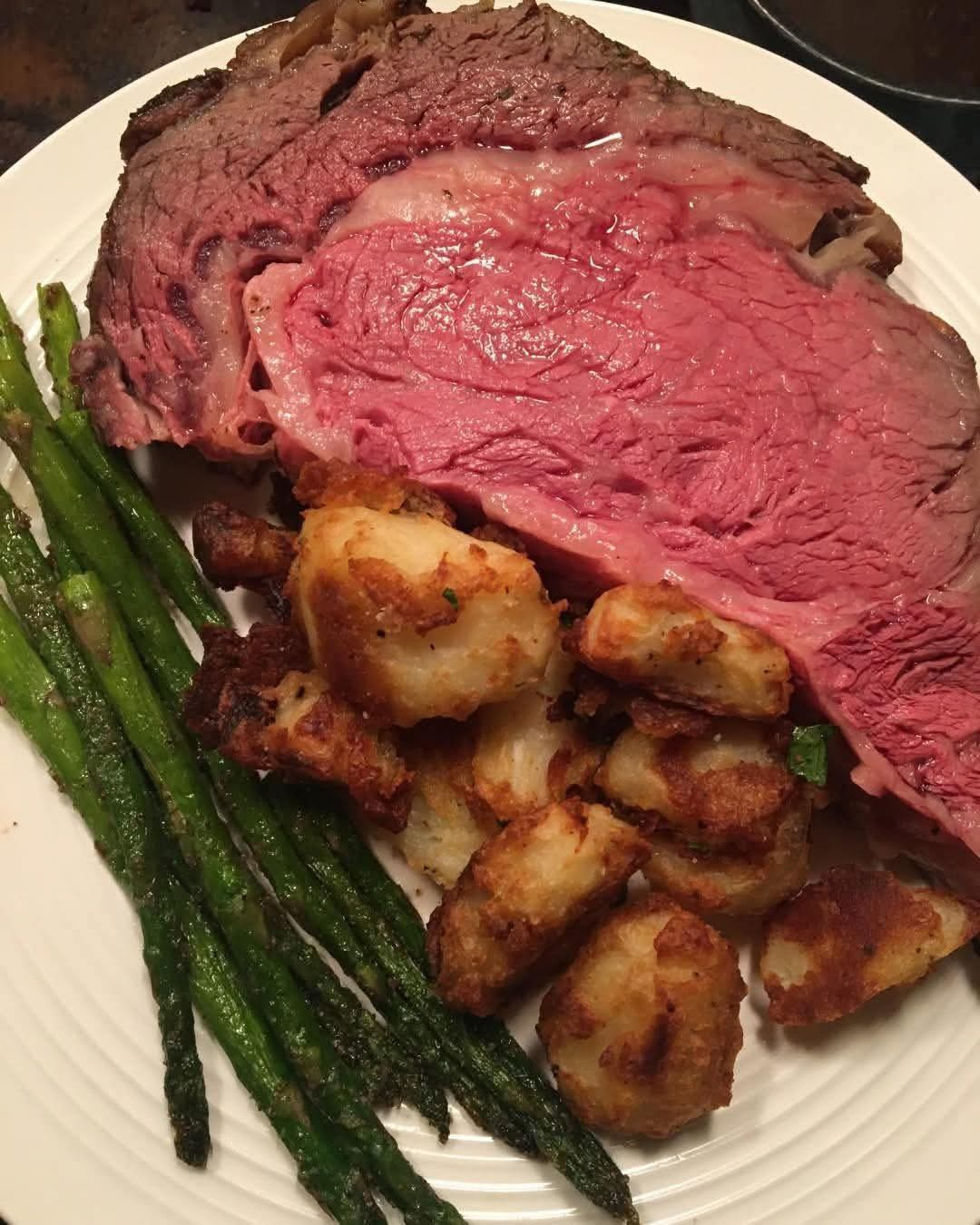When I first see a prime rib roast, my honest first thought is: luxury, celebration, and pure indulgence. 🥩🔥 It’s one of those dishes that instantly signals a holiday feast, a family gathering, or a special occasion where people gather around the table to enjoy something truly spectacular. The marbling, the crusty seasoning, the tender pink interior—it’s food that brings out excitement and love.
Here’s the big, complete recipe with everything you asked for—introduction, ingredients, instructions, methods, history, formation, conclusion, and even “lovers” of the dish.
🌟 Prime Rib Roast Recipe – A Feast for the Senses
📖 Introduction
Prime rib, also known as a standing rib roast, is a crown jewel of the beef world. Famous for its tenderness, juicy marbling, and rich flavor, it has been a centerpiece of feasts for centuries. Whether it’s Christmas dinner, a wedding celebration, or a Sunday family gathering, prime rib carries prestige. It’s not just food—it’s a statement of hospitality, abundance, and love shared around the table.
🥩 Ingredients
- 1 whole prime rib roast (6–7 pounds, bone-in preferred)
- 4–5 cloves garlic, minced
- 2 tbsp olive oil
- 2 tbsp fresh rosemary, chopped
- 2 tbsp fresh thyme, chopped
- 1 tbsp coarse sea salt
- 2 tsp freshly ground black pepper
- 1 tsp smoked paprika (optional for depth)
- 1 tsp Dijon mustard (optional, for crust binding)
📝 Instructions / Methods
1. Preparation
- Remove the prime rib from the refrigerator at least 2 hours before roasting. It must come to room temperature for even cooking.
- Pat it dry with paper towels.
2. Seasoning
- Mix olive oil, garlic, rosemary, thyme, salt, pepper, and paprika into a paste.
- Rub this mixture generously all over the roast, making sure it coats both meat and fat.
- Optional: Brush lightly with Dijon mustard before applying the rub for extra crust.
3. Roasting (Traditional Method)
- Preheat oven to 500°F (260°C).
- Place the prime rib in a roasting pan, bones down, fat side up.
- Roast at high heat for 15 minutes to sear and develop a crust.
- Reduce heat to 325°F (163°C) and continue roasting for:
- Rare: 120°F (48°C), ~12–13 min/lb
- Medium-rare: 130°F (54°C), ~14–15 min/lb
- Medium: 140°F (60°C), ~16–17 min/lb
- Use a meat thermometer—never guess!
4. Resting
- Remove roast from oven, tent loosely with foil, and let rest 20–30 minutes.
- This step ensures juices redistribute and the roast stays succulent.
5. Serving
- Slice between the bones into thick, juicy portions.
- Serve with au jus or creamy horseradish sauce.
📜 History & Formation
The term “prime rib” comes from its location in the primal rib section of the cow, one of the most tender and flavorful cuts. Dating back to 18th-century England, it became a festive dish for aristocrats. In America, especially in steakhouses of the 1940s and 1950s, prime rib was the hallmark of indulgence. Over time, it has remained the king of roasts, symbolizing wealth, celebration, and comfort.
❤️ Lovers of Prime Rib
- Holiday Gatherers: Families who make it the centerpiece of Christmas or New Year’s.
- Beef Connoisseurs: People who admire marbling, tenderness, and flavor in fine cuts.
- Romantics: Couples who share it during special dinners, often paired with red wine.
- Traditionalists: Those who believe no feast is complete without a majestic roast.
✅ Conclusion
Prime rib is more than a meal—it’s an experience of love, tradition, and flavor. From its historical roots to the aroma that fills your kitchen, it represents togetherness. Serve it with confidence, carve it with pride, and enjoy the joy it brings to the table.
👉 Would you like me to also give you a “reverse-sear” method for prime rib (a modern approach that makes it extra tender), or should I keep it traditional?
